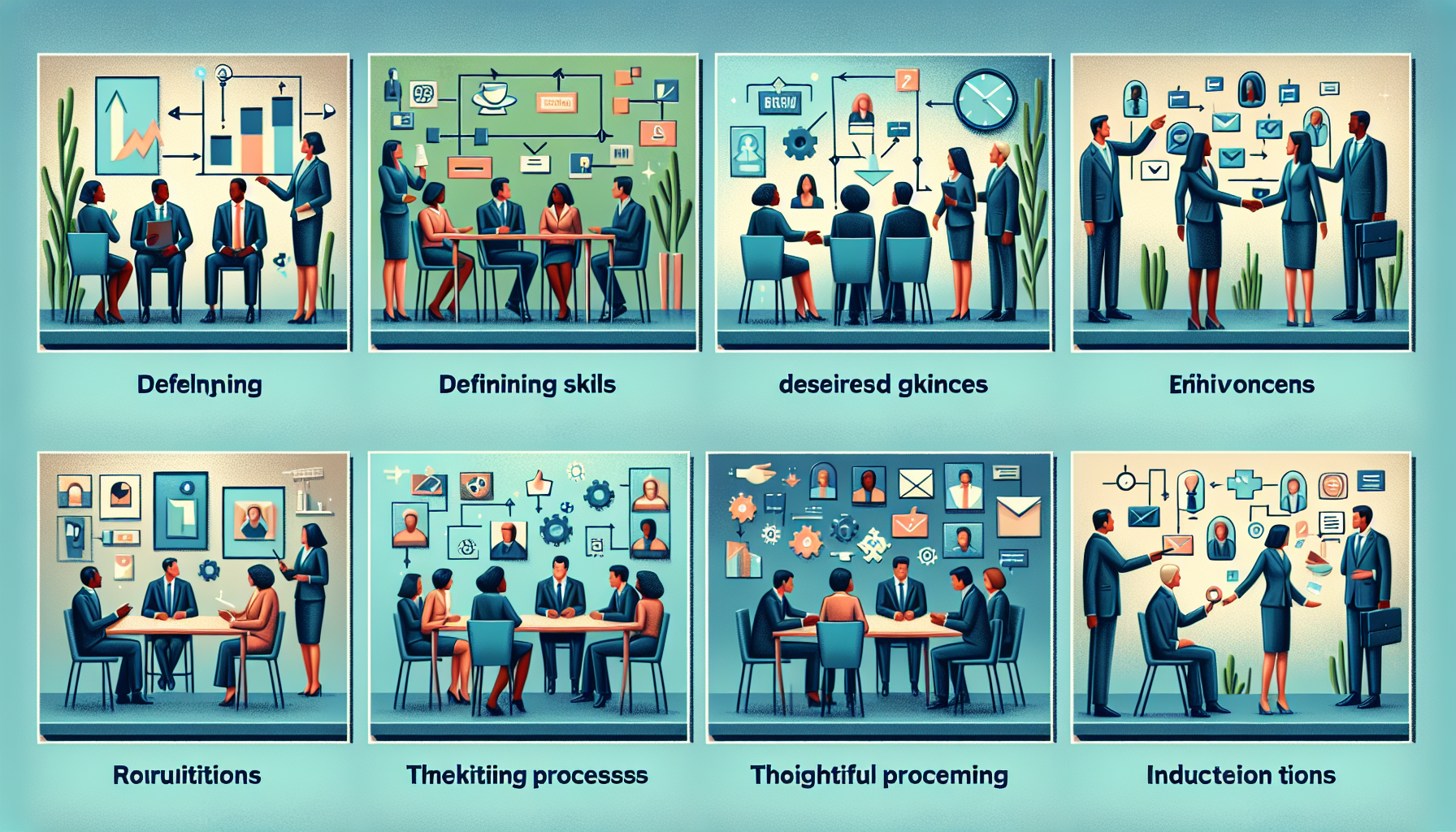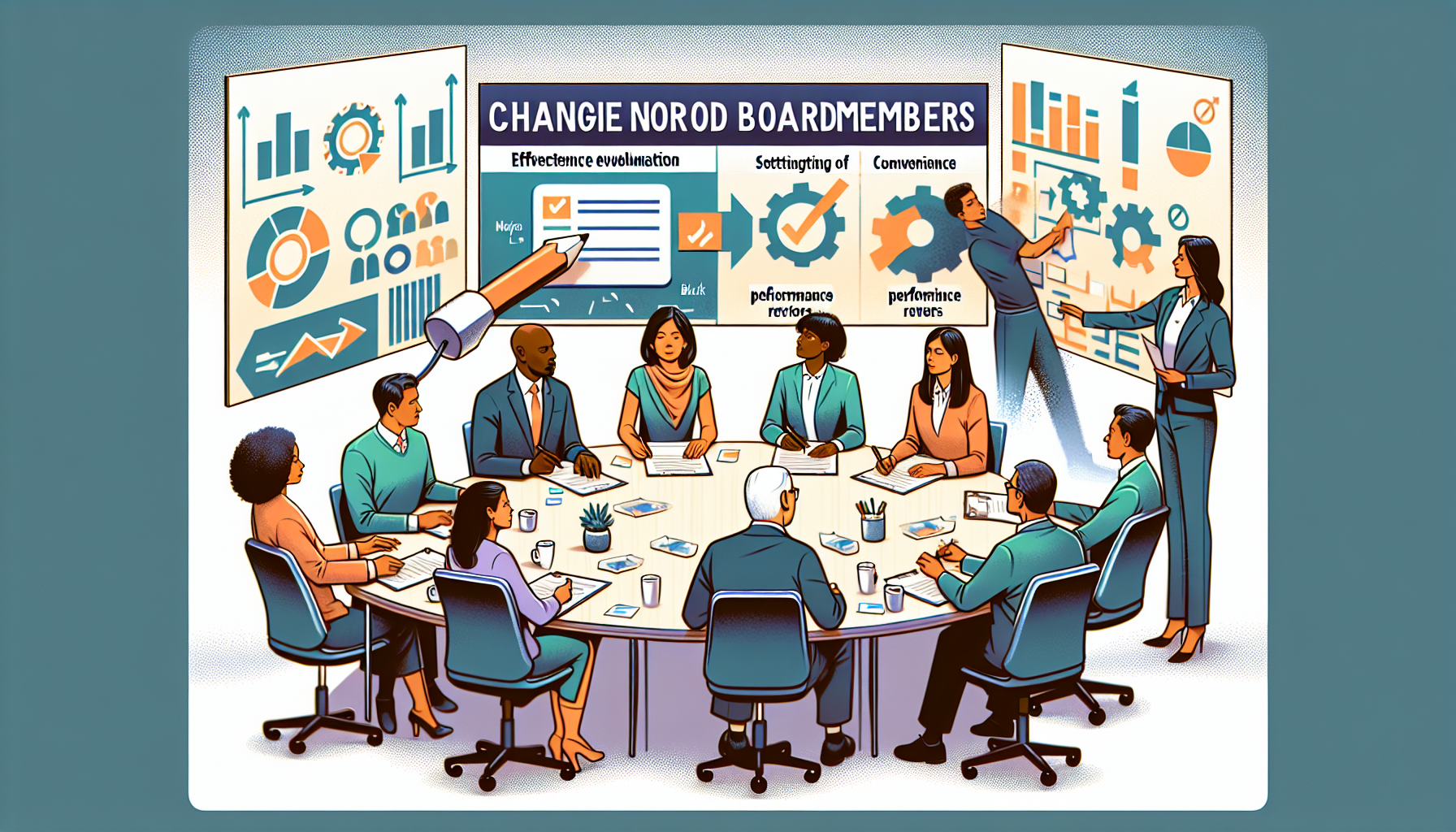Changing nonprofit board members can feel daunting, especially when the organization relies on strong leadership. However, the need for change often arises from stagnant ideas or a lack of diverse perspectives. When board members don’t align with the organization’s mission, it can hinder progress and growth. But don’t worry! By understanding the need for change, assessing current performance, and identifying gaps, nonprofits can successfully revamp their boards. This blog post will guide you through effective ways to achieve that transformation.
Key Takeaways:
- Recognize why changes in board membership are essential.
- Evaluate how the current board is performing.
- Discover what skills and experiences are missing.
- Create a clear plan for recruitment and transition.
- Celebrate the contributions of both new and former members.
Understand the Need for Change
Understanding the need for change is crucial for any nonprofit. A stagnant board can lead to missed opportunities and a lack of innovation. Nonprofits thrive when they embrace fresh ideas and diverse viewpoints. When board members are not effectively contributing, it can create frustration among staff and volunteers. This discontent can impact donor engagement and overall mission fulfillment.
By recognizing the signs that change is necessary, nonprofits can proactively address issues before they escalate. Engaging with stakeholders and gathering feedback can help identify areas needing improvement. A well-functioning board can significantly enhance a nonprofit’s impact, making it essential to prioritize these changes.

Assess Current Board Performance
Assessing current board performance is an essential first step in making effective changes. Nonprofits should review how well each member fulfills their role. Are they attending meetings regularly? Are they bringing valuable insights to discussions? Gathering performance data can provide a clearer picture of the board’s strengths and weaknesses.
Consider using surveys or one-on-one interviews to gain honest feedback from board members and staff. This information can highlight areas needing improvement, such as lack of engagement or specific skills. According to a study by BoardSource, effective boards have members who actively participate and contribute their expertise. By knowing where the board stands, nonprofits can make informed decisions about potential changes.
Identify Gaps and Opportunities
Identifying gaps and opportunities within the board can lead to significant improvements. Start by examining the current skills and experiences of board members. Are there areas lacking expertise, such as fundraising, marketing, or community outreach? Understanding these gaps can help nonprofits recruit new members who bring the necessary skills.
Additionally, consider the board’s diversity. A diverse board can offer varied perspectives, enhancing decision-making. Look for opportunities to include individuals from different backgrounds, professions, and experiences. This diversity not only enriches discussions but also helps the organization connect better with its community. Embracing these changes can create a more robust and effective board, ultimately benefiting the nonprofit’s mission.

Develop a Clear Plan
Developing a clear plan is key to successfully changing nonprofit board members. Without a structured approach, the process can become chaotic and ineffective. Start by outlining the specific reasons for the change and what you hope to achieve. This plan should include strategies for recruiting new members, as well as how to transition current members out.
A solid plan helps ensure everyone involved understands their roles and responsibilities. It also sets the tone for open communication throughout the process. By laying out a clear path, nonprofits can navigate changes smoothly, ultimately leading to a stronger and more effective board.
Set Goals for the New Board
Setting goals for the new board is essential for guiding its direction and effectiveness. Goals should be specific, measurable, achievable, relevant, and time-bound (SMART). For instance, a goal could be to increase community engagement by 30% within the next year or to diversify the board by adding members from underrepresented groups.
These goals will help provide focus and clarity for the new board members. They should align with the nonprofit’s mission and vision, ensuring everyone is on the same page. Regularly reviewing these goals can keep the board accountable and motivated to achieve its objectives, ultimately benefiting the organization as a whole.
Create a Timeline for Changes
Creating a timeline for changes is crucial to keep the process organized and efficient. A well-defined timeline outlines when each step will take place, from assessing current board members to onboarding new ones. For example, you might set a timeline that includes one month for recruitment, followed by two months for training and orientation.
This structure helps everyone involved understand deadlines and expectations. It can also aid in managing any potential disruptions during the transition. Having a clear timeline encourages accountability and ensures that the nonprofit stays focused on its goals. By mapping out the process, organizations can make the transition smoother and more successful.
Communicate with Stakeholders
Communicating with stakeholders is essential during the process of changing nonprofit board members. Transparency helps build trust and ensures everyone feels included in the decision-making process. Start by identifying all relevant stakeholders, including current board members, staff, volunteers, and donors. Each group has a unique perspective that can provide valuable insights.
Regular updates about the changes can help manage expectations and reduce anxiety among stakeholders. Consider using newsletters, meetings, or social media to share information. By fostering open communication, nonprofits can create a supportive environment that encourages collaboration and engagement throughout the transition.
Inform Existing Board Members
Informing existing board members about the changes is crucial for maintaining morale and engagement. Schedule a meeting to discuss the reasons behind the changes and the expected outcomes. This transparency helps existing members understand their roles in the transition process.
Encourage an open dialogue where board members can express their thoughts and concerns. This approach not only shows respect for their contributions but also allows for constructive feedback. Keeping current members in the loop can facilitate a smoother transition, making them feel valued and involved in shaping the future of the board.
Engage with Staff and Volunteers
Engaging with staff and volunteers is vital for a successful transition in board membership. These individuals often have firsthand experience with the board’s effectiveness and can offer valuable insights. Organize meetings or workshops to gather their feedback on what changes they believe are necessary.
Additionally, keeping staff and volunteers informed about the changes will help them feel included and valued. They can play a significant role in supporting new board members and adapting to the changes. By fostering a collaborative environment, nonprofits can ensure that everyone is aligned with the organization’s mission and goals, ultimately enhancing overall effectiveness.

Recruit New Board Members
Recruiting new board members is a critical step in revitalizing a nonprofit’s leadership. This process should be strategic and intentional, focusing on attracting individuals who align with the organization’s mission and values. A well-thought-out recruitment strategy can ensure that the new members bring fresh perspectives and essential skills to the board.
Start by creating a clear profile of the ideal candidate. This profile should include desired skills, experiences, and personal qualities that reflect the nonprofit’s goals. By actively seeking out candidates who fit this profile, organizations can build a more effective and dynamic board that drives success.
Define Desired Skills and Experience
Defining the desired skills and experience for new board members is crucial for ensuring a well-rounded team. Consider the current gaps identified during the assessment phase. For instance, if fundraising is a priority, seek individuals with a background in development or marketing.
Additionally, think about the importance of diversity in experience. Including members from various sectors—such as education, healthcare, or technology—can enhance the board’s effectiveness. This diversity fosters innovative thinking and better decision-making. Clearly outlining these requirements will help guide the recruitment process and attract the right candidates.
Use Networking and Referrals
Using networking and referrals is an effective way to find potential board members. Leverage existing connections within the nonprofit community, including current board members, staff, and volunteers. They may know individuals who would be a great fit for the board.
Consider hosting networking events or informational sessions to introduce the organization to prospective members. These gatherings can create opportunities for interested individuals to learn more about the nonprofit’s mission and goals. Additionally, utilizing platforms like LinkedIn can help broaden the search for candidates. Engaging in these strategies can lead to finding dedicated and skilled individuals to strengthen the board.
Implement a Transition Process
Implementing a transition process is essential for integrating new board members smoothly. A well-structured approach can help minimize disruption and ensure that the new members feel welcomed and prepared. Start by outlining the steps involved in the transition, including timelines and responsibilities.
Involve existing board members in the process to facilitate knowledge transfer. This collaboration can create a supportive environment where new members can ask questions and seek guidance. By prioritizing a thoughtful transition, nonprofits can set the stage for a successful and effective board.
Provide Orientation for New Members
Providing orientation for new members is crucial for their success on the board. An effective orientation program should cover the nonprofit’s mission, vision, and values, as well as the roles and responsibilities of board members. This foundational knowledge helps new members understand how they can contribute effectively.
Consider creating an orientation packet that includes important documents, such as bylaws, strategic plans, and financial reports. Additionally, schedule one-on-one meetings with key staff or existing board members to offer insights and answer questions. A comprehensive orientation ensures that new members feel confident and engaged from the start.
Establish Mentorship Programs
Establishing mentorship programs can significantly enhance the onboarding experience for new board members. Pairing them with experienced board members provides valuable support and guidance. Mentors can share their knowledge about the organization, its culture, and best practices for board service.
This relationship fosters a sense of belonging and encourages new members to ask questions and seek advice. It also promotes continuity within the board, as seasoned members can help integrate fresh perspectives while maintaining the organization’s core values. By investing in mentorship, nonprofits can cultivate a strong and cohesive board that drives success.

Evaluate the New Board’s Effectiveness
Evaluating the new board’s effectiveness is crucial for ensuring it meets the organization’s goals. Regular assessments help identify strengths and areas for improvement. This process can include setting clear performance metrics that align with the nonprofit’s mission.
Consider using tools like surveys, self-assessments, or peer reviews to gather data on how well the board is functioning. By systematically evaluating the board, nonprofits can make informed decisions about future changes and improvements. This ongoing evaluation fosters accountability and encourages a culture of continuous growth.
Set Up Regular Performance Reviews
Setting up regular performance reviews is essential for maintaining the board’s effectiveness. These reviews should be scheduled annually or biannually to assess individual and collective performance. During these evaluations, board members can reflect on their contributions, discuss challenges, and celebrate successes.
Establishing a structured review process promotes transparency and accountability. It also allows the board to adjust its strategies based on feedback and changing circumstances. By prioritizing regular performance reviews, nonprofits can ensure that their board remains aligned with the organization’s mission and goals.
Gather Feedback from All Members
Gathering feedback from all members is vital for understanding the board’s dynamics and effectiveness. Encourage an open culture where board members feel comfortable sharing their thoughts and experiences. This feedback can be collected through anonymous surveys, discussions during meetings, or one-on-one conversations.
Listening to diverse perspectives helps identify potential issues and areas for improvement. It also fosters a sense of inclusion and collaboration within the board. By actively seeking input from all members, nonprofits can create a more cohesive and effective board that drives the organization forward.
Celebrate the Changes
Celebrating the changes within the board is an important step in fostering a positive culture and encouraging engagement. Acknowledging the transition reinforces the organization’s commitment to growth and improvement. Consider hosting an event or gathering to mark the occasion, inviting all stakeholders to participate.
This celebration not only honors the new members but also recognizes the work of existing and former board members. By highlighting the positive aspects of the changes, nonprofits can build excitement and enthusiasm for the future. This approach helps create a supportive environment that motivates everyone involved to contribute to the organization’s success.
Acknowledge Contributions of Former Members
Acknowledging the contributions of former board members is essential for maintaining goodwill and respect within the organization. These individuals played a vital role in shaping the nonprofit’s direction and should be recognized for their efforts. Consider creating a tribute or recognition program that highlights their achievements and impact.
A simple thank-you note or public acknowledgment during meetings can go a long way in showing appreciation. Celebrating their contributions fosters a sense of community and encourages continued support from past members. This recognition also sets a positive tone for new members, reinforcing the value of collaboration and commitment.
Highlight Success Stories of New Members
Highlighting success stories of new members is a fantastic way to showcase the positive impact of board changes. Share these stories through newsletters, social media, or at events to illustrate how new perspectives are enhancing the organization. Celebrate their contributions, such as successful fundraising initiatives or innovative ideas that align with the nonprofit’s mission.
By promoting these achievements, nonprofits can inspire other members and stakeholders to engage fully. It also demonstrates the effectiveness of the recruitment process, showing that the organization is committed to bringing in talented individuals. Sharing these success stories fosters a culture of recognition and motivation, ultimately benefiting the entire organization.
Frequently Asked Questions
How do I remove someone from a nonprofit board?
Removing someone from a nonprofit board typically requires following the organization’s bylaws. Most bylaws outline specific procedures for board member removal, such as requiring a vote from other board members. It’s essential to document the reasons for removal and ensure that the process is transparent and fair. Engaging legal counsel can also help navigate any legal implications. For more detailed guidance, you can refer to resources on nonprofit governance.
How do I change my board of directors nonprofit with the IRS?
To change your board of directors with the IRS, you must file Form 990 or Form 990-EZ, which reports changes in your organization’s leadership. Additionally, if there are significant changes in the board structure, you may need to update your nonprofit’s information with the state where you are incorporated. Keeping accurate records is crucial for compliance with both state and federal regulations. For further information, check out the guidelines provided by the IRS.
How do I appoint new board members?
Appointing new board members involves several steps. First, define the desired skills and experiences needed for the board, as discussed earlier. Next, reach out to potential candidates through networking and referrals. Once candidates are identified, conduct interviews to assess their fit with the organization’s mission. Finally, follow the organization’s bylaws to formally appoint the new members during a board meeting. You can learn more about the recruitment process here.
Who has the right to remove members of the board?
Typically, the existing board members have the right to remove fellow board members, as outlined in the nonprofit’s bylaws. This process often requires a majority vote or a specific procedure to ensure fairness. In some cases, the organization’s membership may also have the authority to remove board members, depending on the structure. It’s vital to refer to your bylaws for specific guidelines on this matter. For more insights on governance, check out this resource on nonprofit governance.



